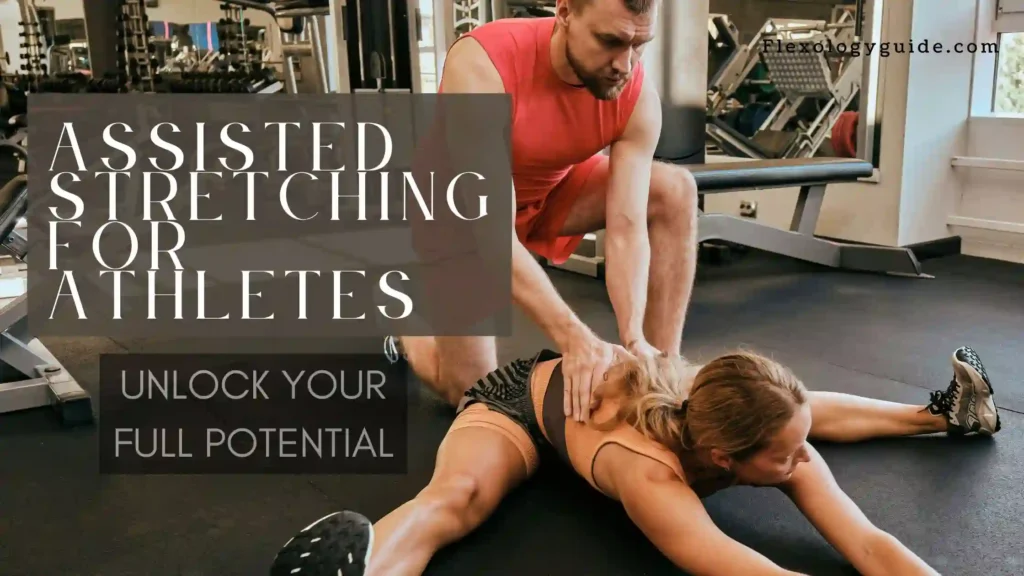Assisted stretching programs are rapidly gaining traction among athletes in every sport—and it’s easy to see why. Whether you’re a runner, weightlifter, golfer, or cyclist, professional-assisted stretching can enhance performance, improve mobility, and significantly reduce the risk of injury. Below, we break down the best assisted stretching programs for athletes, tailored to different sports and performance needs.
Best Assisted Stretching for Runners: Improve Stride & Prevent Injuries
Running places consistent stress on major muscle groups like the hamstrings, quadriceps, and calves. Assisted stretching for runners focuses on increasing flexibility and reducing strain:
- Hamstring Stretch – Helps reduce tightness and prevent strains.
- Hip Flexor Stretch – Supports stride length and alleviates lower back pressure.
- Calf Stretch – Reduces risk of Achilles tendonitis and plantar fasciitis.
Top programs like those from StretchLab and Stretch Zone offer runner-specific protocols with one-on-one attention to maximize recovery and performance.
Assisted Stretching for Weightlifters & Powerlifters: Boost Mobility & Lifting Power
Lifters need optimal mobility to unlock their strength potential. Assisted stretching programs for weightlifters aim to reduce stiffness and increase joint range:
- Chest & Shoulder Openers – Improve overhead movements like presses and snatches.
- Lower Back & Glute Stretches – Enhance stability during squats and deadlifts.
- Quad & Hamstring Flexibility – Allow deeper squats and better explosive control.
Facilities like StretchU and StretchLab offer custom programs to meet the mobility demands of serious lifters.
Game-Changing Assisted Stretching for Golfers: Enhance Swing Mechanics
Flexibility and range of motion are crucial for golfers to maintain consistency and power. The best assisted stretching routines for golfers emphasize:
- Rotational Spine Stretches – Improve swing fluidity and reduce back strain.
- Hip Mobility Drills – Generate more power and stability through the swing.
- Shoulder Mobility Exercises – Ensure control and smoother follow-throughs.
Golfers using programs from Stretch Zone often report longer drives, less stiffness, and improved recovery between rounds.
Assisted Stretching for Cyclists: Optimize Posture, Power & Endurance
Cyclists endure repetitive motions that lead to tight hips, lower backs, and quads. Specialized assisted stretching for cyclists focuses on:
- Hip & IT Band Stretches – Improve pedal motion and alleviate knee pain.
- Lower Back Flexibility – Maintain strong and comfortable cycling posture.
- Quads & Calf Stretches – Support long-distance pedaling and prevent fatigue.
Studios like StretchLab design cyclist-specific plans to enhance endurance and reduce overuse injuries.
Real Athlete Case Studies: Staying Injury-Free with Assisted Stretching
🏃 Elite Marathon Runner
Integrated bi-weekly assisted stretching and eliminated recurring hamstring injuries, leading to faster race times and career longevity.
🏋️ Competitive Powerlifter
Struggled with mobility and back pain—now uses regular sessions to improve squat depth and reduce injury, enhancing competition performance.
⛳ PGA Tour Golfer
Battled with chronic back stiffness. After incorporating assisted stretching, saw marked improvements in swing fluidity and consistency.
Frequently Asked Questions: Assisted Stretching for Athletes
What happens during an assisted stretching session?
You’ll undergo a mobility assessment followed by a personalized session targeting your tightest areas. Professionals guide each stretch safely and effectively.
How often should athletes stretch with a professional?
Most athletes benefit from 1–2 assisted stretching sessions per week, depending on training volume and goals.
Is assisted stretching supposed to hurt?
No. While some stretches may be deep or intense, pain is not normal. The goal is to improve mobility in a controlled, comfortable way.
Can assisted stretching replace warm-ups or cooldowns?
Assisted stretching complements warm-ups and cooldowns—it doesn’t replace them. Use it as part of a broader performance and recovery plan.
Is assisted stretching good for beginners?
Absolutely. Whether you’re a seasoned athlete or just starting out, assisted stretching is scalable and beneficial for all levels.
Final Thoughts: Is Assisted Stretching Right for You?
No matter your sport, adding assisted stretching to your training routine can give you the edge you’ve been looking for. From faster recovery to better performance, these programs are designed to support athletes of all levels. Whether you’re aiming for a new PR or just want to move pain-free, assisted stretching could be the missing piece in your fitness puzzle.
